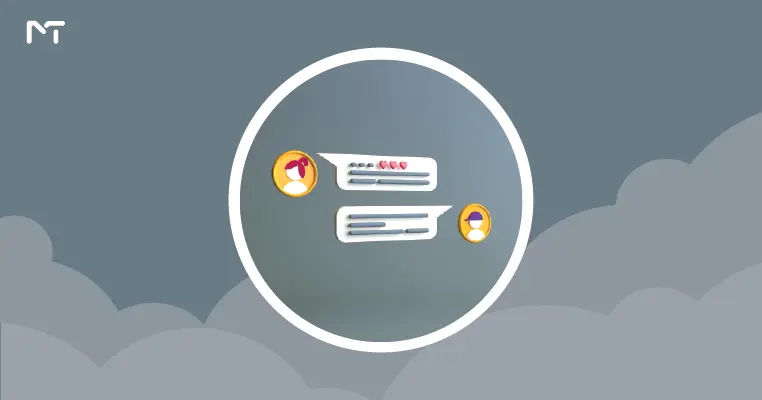In this article, we’ll explore how to create a Telegram bot for auto reply in 2025 using both no-code platforms and custom coding methods. Whether you’re a business owner looking to streamline customer service or a developer aiming to automate Telegram chats, this guide offers practical steps, tools, and tips. Auto-reply bots not only save time but also improve responsiveness, helping businesses and communities stay active and efficient around the clock.
Why Use a Telegram Bot for Auto Reply?
Telegram bots offer a seamless way to automate repetitive tasks. One of the most popular use cases is setting up an auto-reply bot that responds instantly to messages. This is especially useful for:
- Customer support teams
- Online shops and service providers
- Community managers
An auto-reply bot ensures your audience never feels ignored, even outside working hours. It helps maintain engagement, reduce response times, and boost user satisfaction.
Tools You Can Use to Create a Telegram Auto Reply Bot
There are two main approaches to creating a Telegram auto-reply bot: using no-code platforms or building your own with code. Each option has its own strengths depending on your technical experience and needs.
No-Code Platforms
If you’re not familiar with coding, no-code platforms are a great way to build your Telegram bot for auto reply:
- Manybot: Easy interface for creating simple auto-responses.
- Chatfuel: Offers templates for customer service and lead generation.
- Make (Integromat): Great for advanced workflows and integrations with Google Sheets or CRMs.
These platforms usually require you to connect your Telegram account, create a bot via BotFather, and configure triggers and responses.
Custom Coding Methods
If you’re a developer or want more control, you can build an auto-reply bot using code:
- Python (python-telegram-bot library)
- Node.js (Telegraf.js)
These libraries offer full flexibility to handle different message types, set custom logic, and connect with APIs or databases.
Comparison: No-Code vs. Custom Code
| Feature | No-Code Tools | Custom Coding |
|---|---|---|
| Ease of Use | High (Beginner-friendly) | Medium to Low (Requires skills) |
| Flexibility | Limited | Full control |
| Integration Support | Built-in | Custom APIs possible |
| Best For | Small businesses, non-tech users | Developers, complex needs |
Step-by-Step: How to Create a Telegram Bot for Auto Reply
This section walks you through the complete process of building a Telegram auto-reply bot from scratch. Whether you choose a no-code solution or a custom-coded approach, these steps will help you configure, test, and launch your bot effectively.
Step 1: Set Up Your Bot with BotFather
- Open Telegram and search for “BotFather”
- Use the
/newbotcommand - Choose a name and username for your bot
- Copy the API token provided
Step 2: Choose Your Development Method
- No-Code: Use tools like Chatfuel or Make to connect your bot and set up replies
- Custom Code: Use Python or Node.js to build a custom bot script using the API token
Example Code (Python):
from telegram.ext import Updater, MessageHandler, Filters
def auto_reply(update, context):
update.message.reply_text("Thanks for your message! We'll get back to you soon.")
updater = Updater("YOUR_API_TOKEN")
dp = updater.dispatcher
dp.add_handler(MessageHandler(Filters.text, auto_reply))
updater.start_polling()
updater.idle()
Step 3: Configure Auto Reply Logic
- Define the messages or keywords that trigger auto-responses
- Set conditions (e.g., time of day, user role)
- Write clear and friendly reply messages
Step 4: Test and Deploy
- Run tests in private chats or groups
- Monitor responses and fix any errors
- Deploy the bot for public or business use
Adding your bot to the right chat environments boosts its usability. If you’re planning to use it in a wider setting, learn how to add bot to Telegram group so it can automatically respond in both private and public spaces. This allows the bot to assist in communities, handle support in channels, or manage repetitive queries in large group chats.
Tips for Making Your Auto Reply Bot Effective
Creating an effective auto-reply bot isn’t just about setting automated messages—it’s about designing responses that feel helpful, human, and timely. Here are some proven strategies to help you optimize your bot’s communication and user experience.
Be Clear and Concise
Don’t overload users with information. Provide just enough detail to guide them or direct them to human support.
Example: “Hi! We received your message and will respond within 24 hours. In the meantime, check out our FAQ.”
Use Personalization
Using the user’s first name or referring to past interactions can make replies feel more human.
Example: “Hello Sarah, thanks for getting in touch again!”
Add Fallback Options
Not all questions can be handled automatically. Offer options to talk to a real person when needed.
Example: “Type ‘human’ anytime to speak with our support team.”
Monitor and Update Regularly
Analyze how your bot is performing and make improvements based on user feedback and analytics. Consider A/B testing different reply styles.
Use Cases: Who Benefits from Telegram Auto Reply Bots?
Telegram auto reply bots can support a variety of users and organizations by enhancing communication and reducing manual workload. Below are some of the main groups who benefit from using these bots in their daily operations.
Small Businesses
Provide instant answers to FAQs, booking confirmations, or working hours. Helps increase customer trust and conversion.
Content Creators
Set automated replies for new subscribers or fans reaching out with common questions, such as where to find links, schedules, or latest posts.
Large Communities or Channels
Send automated welcome messages or rule explanations to new members. Keeps your community structured and reduces admin load.
Nonprofits and Mental Health Support
Telegram bots can also be used by NGOs or support groups to share resources, crisis hotline numbers, and automated check-ins.
Example: An emotional support bot that replies with breathing exercises or messages of encouragement.
Conclusion: How to Create a Telegram Bot for Auto Reply
Creating a Telegram bot for auto reply in 2025 is easier than ever, thanks to no-code tools and powerful coding libraries. Whether you want to improve customer support, save time, or enhance engagement, an auto-reply bot is a smart solution.
If you’re new or in a hurry, no-code platforms like Make or Chatfuel are perfect starting points. For developers or those with specific needs, custom coding gives unmatched flexibility.
Start simple, test thoroughly, and evolve your bot as your needs grow. With the right approach, your Telegram bot will become an essential part of your communication strategy.








Leave a Reply